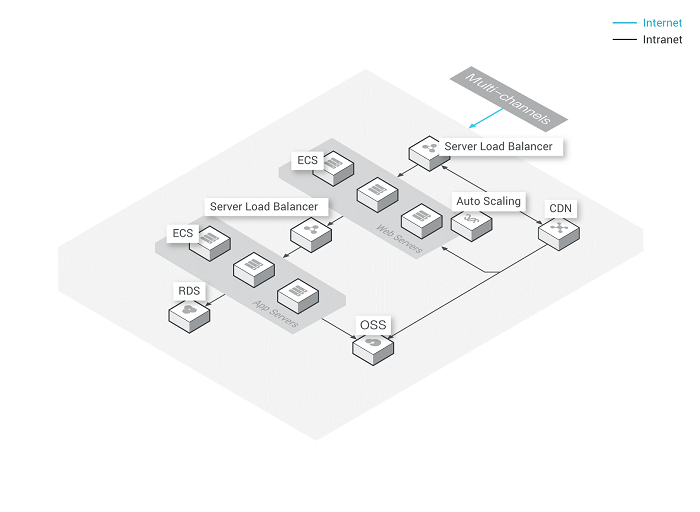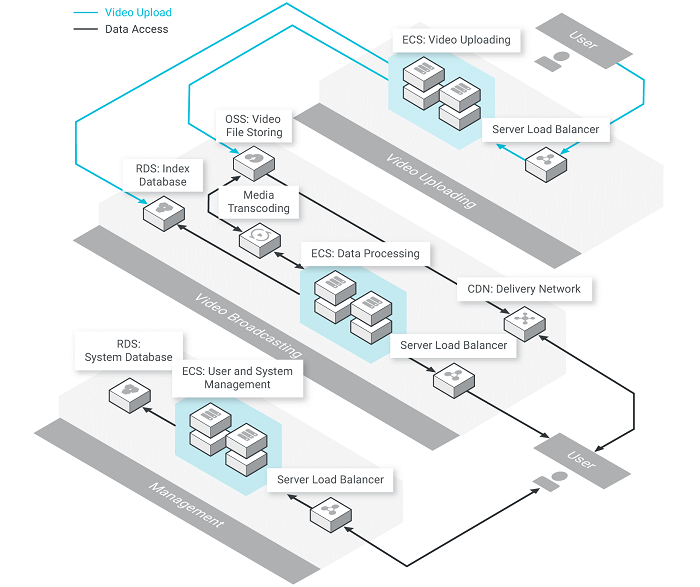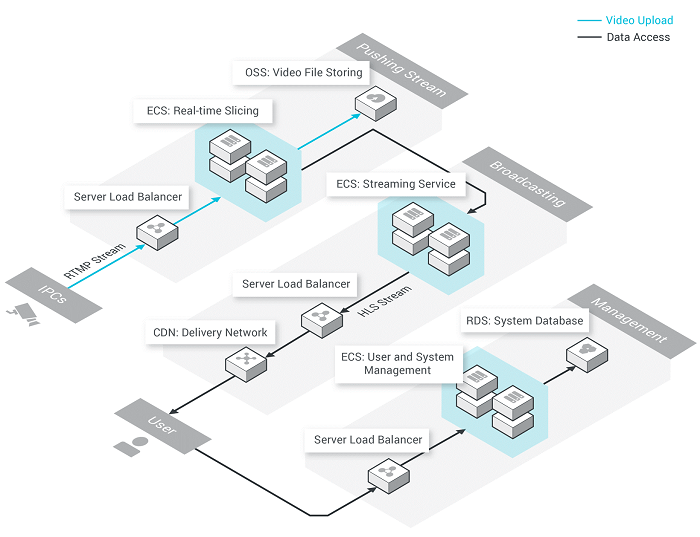
Abstract: CDN delivers the source station's content to the node closest to the user, improving the response speed and success rate of the user's access.
A Content Delivery Network (CDN) delivers the source station's content to the node closest to the user so that the user can obtain the content nearby. This improves the response speed and success rate of the user's access. It resolves access delays caused by delivery, bandwidth, and server performance. CDN is applicable to scenarios such as website acceleration, on-demand video, and live video. Today, we are sharing some typical scenarios applicable for CDN.
To accelerate the distribution of resources for websites or applications with a large volume of static resources, we suggest separating dynamic and static content from each other. Dynamic files can be stored on the ECS. For large volumes of static resources (such as various images, HTML, CSS, and JS files) we suggest storing them on the OSS. CDN can then be used to effectively accelerate content download speeds and make it easier to distribute images, short videos, and other content from OSS.
• Architecture diagram

This scenario applies to the downloading and distribution of various file types, particularly large multimedia files. CDN supports the acceleration of online on-demand streaming services (e.g. for MP4 and FLV videos or where the average size of a single file is greater than 20 MB). The primary service scenarios are on-demand video/audio and large file downloads (e.g. installation packages). We suggest CDN combined with OSS to increase back-to-source speeds and to reduce back-to-source bandwidth cost by nearly 2/3.
• Architecture diagram

Alibaba Cloud live streaming media service provides an integrated solution for media asset storage, slicing and transcoding, access authentication, and content delivery acceleration. Combined with Auto Scaling, it can promptly adjust server bandwidths and respond to sudden traffic spikes. Together with the media transcoding service, it can provide high-speed and stable concurrent transcoding, and seamless task scaling. Currently, the CDN live streaming media service has gone through internal beta testers and been optimized. It will soon be available publicly.
• Architecture diagram

For the distribution of mobile app update files (APK files), the service delivers optimized and accelerated distribution of in-app images, pages, short videos, user-generated content (UGC), and other content. The httpDNS service prevents DNS hijacking and retrieves precise DNS resolution results in real time. This effectively reduces user access times and enhances the overall user experience.
Web Application Firewall Cloud Options: Alibaba Cloud WAF & AWS WAF
Three Reasons to Add Alibaba Cloud to Your Multi-Cloud Strategy

2,599 posts | 764 followers
FollowAlibaba Clouder - July 29, 2020
JDP - November 19, 2021
Alibaba Clouder - October 29, 2018
Alibaba Clouder - April 20, 2021
Alibaba Clouder - November 10, 2020
Alibaba Clouder - March 23, 2021

2,599 posts | 764 followers
Follow CDN(Alibaba Cloud CDN)
CDN(Alibaba Cloud CDN)
A scalable and high-performance content delivery service for accelerated distribution of content to users across the globe
Learn More Content Delivery Solution
Content Delivery Solution
Save egress traffic cost. Eliminate all complexity in managing storage cost.
Learn More Edge Node Service
Edge Node Service
An all-in-one service that provides elastic, stable, and widely distributed computing, network, and storage resources to help you deploy businesses on the edge nodes of Internet Service Providers (ISPs).
Learn More Edge Security Acceleration (Original DCDN)
Edge Security Acceleration (Original DCDN)
Edge Security Acceleration (ESA) provides capabilities for edge acceleration, edge security, and edge computing. ESA adopts an easy-to-use interactive design and accelerates and protects websites, applications, and APIs to improve the performance and experience of access to web applications.
Learn MoreMore Posts by Alibaba Clouder